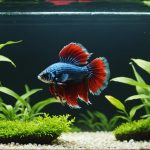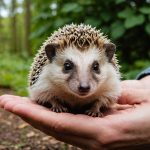Red squirrels, with their vibrant coats and lively personalities, are a captivating sight in Scotland’s woodlands. These enchanting creatures are not just a joy to observe; they play a vital role in their ecosystems. This guide equips nature enthusiasts with practical tips to discover and report red squirrel sightings effectively. By sharing your encounters, you contribute to crucial conservation efforts, fostering a deeper connection with Scotland’s rich biodiversity. Join the movement to protect these remarkable animals while enriching your own outdoor adventures.
Identifying Red Squirrels in Scotland
Understanding the red squirrel identification process is essential for wildlife enthusiasts and conservationists alike. These charming creatures are known for their distinct features and behaviors.
A découvrir également : Essential Tips for Seamlessly Welcoming a New Kitten into Your Dog-Friendly Home
Key Physical Characteristics
Red squirrels are easily recognizable by their reddish-brown fur, which varies in shade depending on the season. They possess a bushy tail, which aids in balance and warmth, and distinctive tufted ears, particularly prominent in winter. Their body length ranges between 18-24 cm, with the tail adding another 15-20 cm.
Behavioral Traits
In the wild, red squirrels exhibit unique behavioral traits. They are diurnal, meaning they are active during the day, particularly at dawn and dusk. Observers may notice their agile movements as they leap between trees, a skill enhanced by their strong hind legs. They are known for their solitary nature, except during the breeding season.
A lire aussi : Essential Tips for Seamlessly Welcoming a New Kitten into Your Dog-Friendly Home
Common Habitats
Red squirrels thrive in coniferous forests, which provide their primary diet of seeds and nuts. In Scotland, they are commonly found in regions like the Highlands and the Cairngorms. These areas offer the dense woodland cover crucial for their survival.
- Distinguishing features: Reddish-brown fur, tufted ears, bushy tail
- Habitat: Coniferous forests, Highlands, Cairngorms
- Behavior: Diurnal, solitary, agile
By recognizing these characteristics, enthusiasts can better appreciate and protect these delightful creatures.
Best Locations for Red Squirrel Viewing
Discover the ideal spots for observing these charming creatures.
National Parks and Reserves
Scotland’s national parks offer prime viewing spots for red squirrels. Cairngorms National Park is a renowned squirrel hotspot, where visitors can witness these creatures in their natural habitat. Galloway Forest Park also provides excellent opportunities, with its vast coniferous woodlands.
Urban Areas
For those in urban settings, certain areas still boast red squirrel populations. Aberdeen’s Hazlehead Park is one such location, where these creatures can often be spotted. Duthie Park is another urban squirrel hotspot known for its thriving population.
Seasonal Considerations
To maximize your viewing experience, consider the seasonal changes. In autumn, red squirrels are particularly active as they gather food for winter. Early mornings and late afternoons in spring also offer optimal viewing times, as squirrels are busy with breeding activities.
- Top Locations: Cairngorms, Galloway Forest, Hazlehead Park
- Urban Spots: Aberdeen, Duthie Park
- Viewing Tips: Autumn for activity, spring for breeding
By exploring these viewing spots, enthusiasts can enjoy observing red squirrels while respecting their natural environment.
Guidelines for Reporting Sightings
Contribute to conservation efforts with your observations.
Step-by-Step Reporting Process
To effectively report red squirrel sightings, follow these steps:
- Observe and Record: Note the date, time, and location of the sighting. Include details about the squirrel’s behavior and environment.
- Photographic Evidence: If possible, take clear photos to support your report.
- Submit Your Data: Use a recommended platform to submit your findings.
Importance of Citizen Science
Citizen science plays a crucial role in red squirrel conservation. By reporting sightings, individuals contribute valuable data that helps track population trends and habitat use. This collective effort enhances our understanding and informs conservation strategies.
Recommended Platforms
Several organizations facilitate data collection and reporting:
- Scottish Wildlife Trust: Provides tools for logging sightings.
- Saving Scotland’s Red Squirrels: Offers a user-friendly platform for data entry.
- iRecord: A versatile app for submitting wildlife observations.
Bulleted List:
- Observe and Record: Key details of the sighting
- Photographic Evidence: Enhances report validity
- Submit Your Data: Use trusted platforms
By engaging in citizen science, enthusiasts can actively participate in preserving Scotland’s red squirrels, ensuring these charming creatures continue to thrive.
Understanding Red Squirrel Behavior
Delve into the intriguing world of red squirrels and their behaviors.
Feeding Habits and Diet Preferences
Red squirrels have a diverse diet that primarily consists of seeds and nuts from coniferous trees. They display a keen preference for pine cones, acorns, and hazelnuts. During autumn, they are particularly active in storing food, creating caches to sustain them through winter. This behavior highlights their adaptability and planning skills.
Social Interactions and Territorial Behaviors
Despite their solitary nature, red squirrels exhibit fascinating social interactions. They establish territories marked by scent, and vigorously defend these areas from intruders. During the breeding season, however, their territorial behavior softens, allowing for mating. Observing these interactions provides insight into their complex social structure.
Seasonal Changes in Behavior and Activity Patterns
Seasonal shifts significantly influence red squirrel behavior. In spring, their activity peaks as they engage in breeding and nurturing young. During summer, they focus on foraging, taking advantage of abundant food. Winter sees a decrease in visibility as they rely on stored food, conserving energy.
- Diet Preferences: Seeds, nuts, pine cones
- Social Structure: Solitary, territorial, breeding season interactions
- Seasonal Activity: Spring breeding, summer foraging, winter caching
By understanding these behavioral patterns, enthusiasts can better appreciate and protect the red squirrel’s unique lifestyle.
Resources for Conservation and Involvement
Engage with organizations dedicated to preserving red squirrels.
Conservation Efforts in Scotland
Scotland hosts a variety of wildlife organizations committed to red squirrel conservation. These groups play a pivotal role in safeguarding the species through research and habitat management. Scottish Wildlife Trust and Saving Scotland’s Red Squirrels are leading efforts, focusing on habitat restoration and public awareness.
Community Engagement and Volunteer Opportunities
Wildlife enthusiasts can actively participate in conservation efforts through volunteer opportunities. These include habitat restoration projects and monitoring squirrel populations. Community events such as workshops and guided walks offer hands-on experience and foster a deeper connection with nature. Engaging in these activities helps build a dedicated network of conservationists.
Educational Materials and Further Reading
Access to educational materials is vital for raising awareness and understanding of red squirrel conservation. Many organizations provide resources such as brochures, online articles, and workshops. These materials cover topics like habitat preservation and the impact of non-native species.
Bulleted List:
- Wildlife Organizations: Scottish Wildlife Trust, Saving Scotland’s Red Squirrels
- Volunteer Opportunities: Habitat restoration, population monitoring
- Educational Resources: Brochures, online articles, workshops
By utilizing these resources, individuals can contribute to the preservation of red squirrels and support ongoing conservation efforts.










